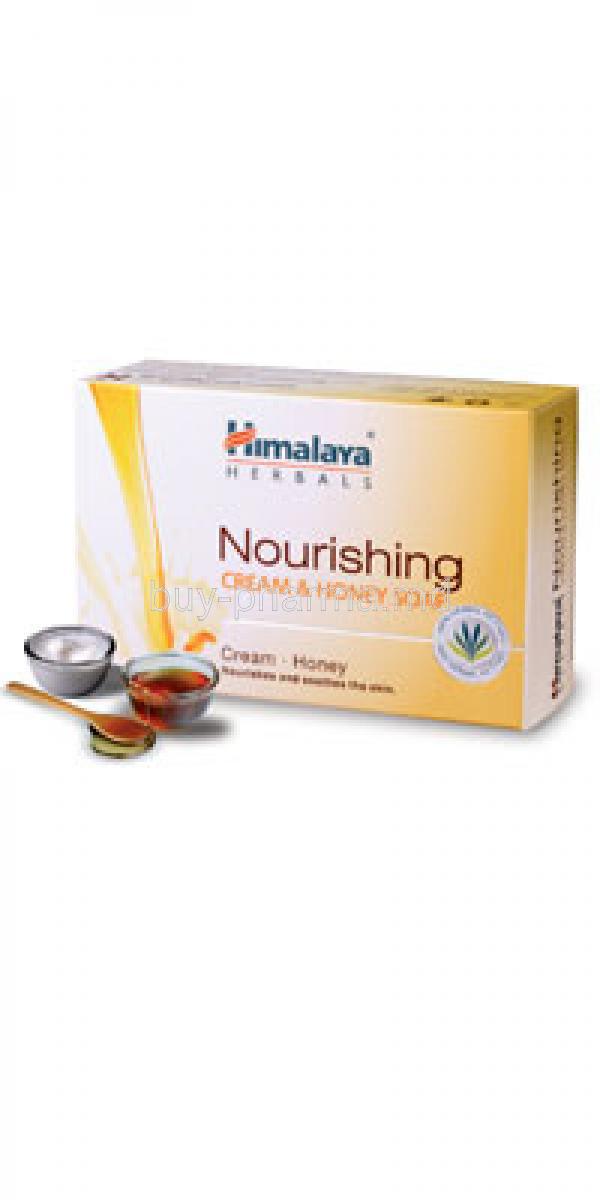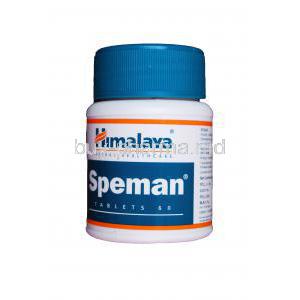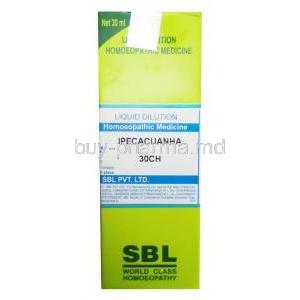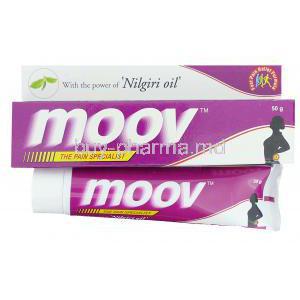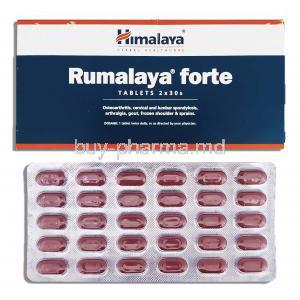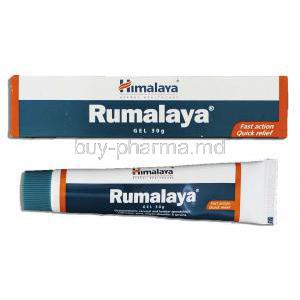I. Introduction to Himalaya Cream and Honey Soap
Overview of Himalaya as a brand
Himalaya is a globally recognized herbal wellness company founded in 1930, renowned for integrating traditional Ayurvedic knowledge with modern pharmaceutical science. With over nine decades of botanical research, Himalaya has become a symbol of purity, efficacy, and sustainability in personal care and wellness products.
What is Himalaya Cream?
Himalaya Cream is a herbal-based topical formulation designed to nourish, hydrate, and protect the skin. It is enriched with plant extracts that provide soothing and rejuvenating effects, making it suitable for daily skincare, especially for dry or sensitive skin types.
What is Himalaya Honey Soap?
Himalaya Honey Soap is a gentle cleansing bar infused with honey and natural oils. It provides deep moisturization while cleansing impurities, leaving the skin soft, supple, and refreshed. Ideal for regular use, it suits all skin types, including delicate or allergy-prone skin.
II. Composition and Active Ingredients
Key ingredients in Himalaya Cream
- Winter Cherry (Withania somnifera): Anti-inflammatory and antioxidant-rich
- Aloe Vera: Deeply hydrates and soothes
- Indian Kino Tree Extract: Heals minor skin irritations
Key ingredients in Himalaya Honey Soap
- Pure Honey: Natural humectant and antimicrobial agent
- Sunflower Oil: Nourishes and retains skin moisture
- Turmeric: Offers antiseptic and antioxidant benefits
Role of herbal components (e.g., honey, aloe vera, natural oils)
Herbal ingredients serve multifunctional roles—moisturizing, protecting, and healing. Honey acts as a natural emollient and antibacterial agent. Aloe vera calms inflammation and aids tissue regeneration. Essential oils replenish lipids and reinforce the skin’s barrier function.
III. Mechanism of Action: How Himalaya Cream and Honey Soap Work
Moisturizing and hydrating properties
The formulations provide long-lasting hydration by locking in moisture at the cellular level. Emollients smoothen the epidermis, while humectants like honey attract water molecules to prevent transepidermal water loss.
Antibacterial and skin-soothing effects of honey
Honey exhibits broad-spectrum antimicrobial action. It inhibits bacterial proliferation while calming erythema and redness. This makes it especially beneficial for blemish-prone or post-shaving skin.
Healing and anti-inflammatory effects on the skin
Bioactive compounds from herbs like turmeric and aloe mitigate inflammatory cytokines, promoting faster skin repair. This reduces discomfort and restores the skin’s natural resilience.
Nourishment and skin barrier restoration
Natural oils and herbal extracts replenish lost lipids and proteins, restoring integrity to the stratum corneum. This reinforces the skin’s barrier function and enhances resistance to irritants.
IV. Primary Uses and Indications
Himalaya Cream for dry and sensitive skin
Formulated specifically for compromised or moisture-deficient skin, Himalaya Cream alleviates roughness, scaling, and discomfort. It provides:
- Day-long moisturization
- Reduction in dryness-associated itching
- Improved skin texture and tone
Himalaya Honey Soap for daily cleansing and moisturizing
This soap is ideal for twice-daily use. It cleanses gently, maintains skin pH, and delivers hydration even in low-humidity conditions. Suitable for use in all climates.
Use in acne-prone and irritated skin
The antimicrobial properties of honey and turmeric help reduce acne-causing bacteria. The soothing base minimizes inflammation and post-acne erythema.
Use for skin rashes and mild dermatitis
The emollient and anti-inflammatory profile of both products provides relief from minor rashes, irritation, and dermatitis caused by allergens, weather changes, or dryness.
V. Off-Label and Alternative Uses
Use in eczema and mild psoriasis
Though not formally indicated, users report symptom alleviation in mild eczema and psoriasis. The products reduce flakiness, itch, and localized redness.
Application for minor cuts, burns, and insect bites
Natural antiseptics like turmeric and honey accelerate healing and prevent infection. Aloe vera soothes minor burns or inflamed areas caused by insect stings.
Use as an after-shave moisturizer
Himalaya Cream works effectively as a non-greasy post-shave moisturizer, reducing razor burn and restoring hydration.
Himalaya Honey Soap for scalp cleansing in dandruff
When used on the scalp, the soap helps reduce mild dandruff and flakiness, particularly in individuals with dry scalp conditions.
VI. Dosage and Proper Administration
Recommended frequency of application for Himalaya Cream
Apply twice daily on clean, dry skin. For severe dryness, a third application may be used at bedtime.
Correct use of Himalaya Honey Soap for optimal results
Use with lukewarm water, lathering gently and rinsing thoroughly. Ideal for morning and evening use.
Application techniques for targeted skincare benefits
Massage the cream in circular motions until fully absorbed. Avoid vigorous rubbing to prevent irritation.
VII. Side Effects and Safety Profile
Overview of safety in normal use
Generally well-tolerated, both products are suitable for long-term use without risk of systemic absorption or dependency.
Common side effects of Himalaya Cream
- Mild redness
- Rare cases of skin peeling with overuse
Common side effects of Himalaya Honey Soap
- Dryness in extremely sensitive skin
- Minor stinging if used on broken skin
Rare and severe adverse skin reactions
Hypersensitivity reactions, though rare, may include contact dermatitis, swelling, or hives. Discontinue use and consult a dermatologist if symptoms persist.
VIII. Precautions and Special Considerations
Skin patch testing before first use
Conduct a patch test on the inner arm and observe for 24 hours. Discontinue if any irritation occurs.
Avoiding contact with eyes and mucous membranes
Both products are strictly for external use. In case of accidental contact, rinse thoroughly with water.
Precautions in individuals with known allergies to natural extracts
Review ingredient list carefully. Avoid use in individuals with documented hypersensitivity to plant extracts or essential oils.
Interaction with medicated topical treatments
Avoid simultaneous application with medicated creams unless advised. It may alter absorption or efficacy of prescription products.
IX. Contraindications and Warnings
Known allergies to any listed ingredients
Contraindicated in patients with allergies to honey, aloe vera, or turmeric.
Pre-existing skin conditions contraindicating use
Not suitable for active infections, weeping eczema, or ulcerated skin without physician supervision.
Not intended for deep or infected wounds
Avoid use on open wounds or areas requiring medical-grade antiseptics.
Caution against internal use
Both products are topical and non-ingestible. Ingestion may result in gastrointestinal distress or allergic response.
X. Administration in Special Populations
Use in elderly individuals with fragile skin
Safe for elderly skin, but recommend gentle application and monitoring for dryness or bruising.
Use during pregnancy and breastfeeding: safety profile
No known risks with external use. Avoid application near the nipple area while breastfeeding.
Himalaya Cream and Soap use in infants and children
Suitable for children over 2 years under adult supervision. Avoid use near eyes and mouth.
Physician consultation in case of compromised skin barriers
Consultation is advised for patients with burns, chronic dermatitis, or immunocompromised skin before initiating use.
XI. Overdose and Misuse
Signs of excessive topical use
Overapplication of Himalaya Cream or Honey Soap may not result in systemic toxicity, but it can lead to localized dermatologic issues. Observable signs include:
- Skin maceration or softening due to prolonged occlusion
- Increased skin sensitivity or burning sensation
- Persistent redness or blotchy pigmentation
Repeated or unnecessarily heavy usage may disrupt the skin’s microbiome and compromise its protective barrier, causing long-term dermal imbalance.
Management of accidental ingestion (especially in children)
If inadvertently ingested, particularly by young children, monitor for symptoms such as:
- Nausea or stomach upset
- Hypersalivation or gag reflex
- Possible allergic manifestations like rash or swelling
Immediate rinsing of the mouth with water is recommended. Contact a poison control center or healthcare provider promptly for guidance, especially if a large quantity has been consumed.
What to do in case of allergic reaction
In cases of suspected hypersensitivity:
- Discontinue product use immediately
- Wash the affected area with mild soap and cool water
- Apply a soothing, non-medicated emollient if required
Severe reactions involving facial swelling, breathing difficulty, or hives necessitate emergency medical attention.
When to seek medical help
Professional evaluation is necessary if:
- Symptoms persist beyond 48 hours
- Skin reactions worsen or spread to other areas
- There is accidental ingestion in infants or toddlers
Medical input ensures safe continuation or cessation of the product and helps rule out underlying conditions exacerbating symptoms.
XII. Storage and Shelf Life
Ideal storage conditions for maintaining product efficacy
To preserve the therapeutic integrity of Himalaya Cream and Honey Soap:
- Store below 30°C (86°F) in a cool, dry place
- Keep tightly sealed to prevent contamination
- Avoid storage near direct heat sources or windows
Exposure to extreme temperatures may degrade herbal components and compromise product consistency.
Shelf life and expiry date information
Both products typically carry a shelf life of 24 to 36 months from the date of manufacture. Always check the expiry date before use. Using expired products can result in reduced efficacy or potential skin irritation.
Signs of spoilage or product degradation
Visual and olfactory cues often indicate compromised product quality:
- Discoloration or separation of cream components
- Unusual or foul odor
- Changes in texture or consistency
Do not use products exhibiting such changes, even if within the expiry date.
Safe disposal of unused or expired products
Dispose of expired or unused cream and soap responsibly:
- Do not flush into water systems
- Wrap in biodegradable paper and discard with general waste
- Follow local regulations for pharmaceutical waste disposal
Improper disposal may harm aquatic ecosystems or contribute to environmental waste.
XIII. Handling and Usage Precautions
Hygiene practices during application
Clean hands before and after applying Himalaya Cream. If using on another person, wear gloves or use a spatula to avoid cross-contamination. Apply only to clean, dry skin.
Storage away from sunlight and moisture
Store the product in opaque containers or drawers to minimize light exposure. High humidity can compromise bar soap integrity and alter cream emulsions.
Avoiding cross-contamination with other skincare products
Avoid dipping fingers directly into jars or sharing products. Use dedicated tools for dispensing, and refrain from mixing Himalaya products with other creams in the same container.
Proper packaging disposal and environmental considerations
Himalaya packaging is often recyclable. Dispose of:
- Cardboard boxes in paper recycling
- Plastic tubes or wrappers in appropriate plastic waste streams
Reduce your environmental footprint by opting for bulk packaging or refills when available.
XIV. Interactions with Other Skincare or Medications
Potential interaction with prescription topical agents
Caution is advised when using Himalaya Cream alongside:
- Topical corticosteroids
- Retinoids or benzoyl peroxide
Always apply herbal products at a different time of day, or at least 30 minutes apart, to minimize interference or irritation.
Compatibility with cosmetics and sunscreens
Both Himalaya Cream and Honey Soap are compatible with most non-comedogenic makeup and SPF products. Apply cream before foundation or sunscreen to maintain barrier function.
Advice on combining herbal and non-herbal skincare products
Introduce new products gradually to monitor for interactions. While herbal products are generally safe, combining with chemical exfoliants, alcohol-based toners, or synthetic serums may alter pH and affect skin tolerance.
Use with exfoliants, peels, or steroid creams
Avoid concurrent use with:
- Chemical peels or AHAs
- Topical steroids unless under medical supervision
Such combinations may lead to overexfoliation or barrier disruption, increasing sensitivity.
XV. Conclusion and User Guidance
Summary of benefits and best practices
Himalaya Cream and Honey Soap offer:
- Hydration and barrier repair
- Gentle cleansing with antimicrobial properties
- Plant-based nourishment for all skin types
Use consistently and store appropriately for maximum benefit.
Himalaya Cream/ Honey Soap FAQ
- What is the benefit of Himalaya honey and cream soap?
- What are the benefits of honey soap on skin?
- What is the effect of honey in soap?
- What is Himalaya Cream/Honey Soap used for?
- What are the key moisturizing and nourishing ingredients in this soap?
- How does this soap benefit dry skin?
- Is Himalaya Cream/Honey Soap suitable for daily use?
- Does this soap have a strong scent?
- Is this soap suitable for sensitive skin?
- Can this soap be used on the face?
What is the benefit of Himalaya honey and cream soap?
This Himalaya Honey Cream soap is great for keeping your skin moisturized. It effectively locks in moisture for a smooth and soft skin texture, promoting a healthy and hydrated complexion.
What are the benefits of honey soap on skin?
Honey soap is a functional skincare item that provides hydration and antibacterial properties, along with exfoliation and skin-brightening benefits.
What is the effect of honey in soap?
Infuses the skin with moisture to keep it supple and refreshed.
What is Himalaya Cream/Honey Soap used for?
It's commonly employed to cleanse the skin while supplying hydration and nourishment delicately.
What are the key moisturizing and nourishing ingredients in this soap?
Honey and milk cream are often used as components due to their ability to hydrate and soften the skin while providing nourishment.
How does this soap benefit dry skin?
When it comes to skincare routines and products, like honey and milk cream, honey helps to keep the skin moist by drawing in and holding onto moisture; on the other hand, milk cream contributes fats and proteins that work to soften and hydrate the skin effectively.
Is Himalaya Cream/Honey Soap suitable for daily use?
It's typically designed to be mild and suitable for use on the body and hands.
Does this soap have a strong scent?
The aroma is usually gentle and sweet like a blend of honey and cream.
Is this soap suitable for sensitive skin?
The blend of hydrating elements ensures that it works well with skin types and is gentle enough for sensitive skin; however, it's always wise to do a patch test beforehand.
Can this soap be used on the face?
Although mainly intended for use as a body cleanser, some people with normal to dry skin on their faces might find it gentle enough to use occasionally. However, individuals with acne-prone skin may prefer a soap specifically designed for care.

